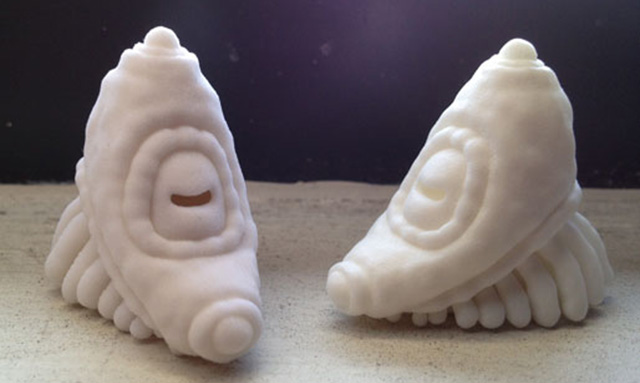Many times we take for granted the detail and expertise found in striking medical images. Most actual photographs would be insufficient for educational purposes, when isolation and manipulation work to form a wholly rendered concept for medical visuals. Artist Jim Stanis already boasts a fine catalogue of medical visualisations, but he also includes 3D prints. It takes an artist’s eye to imitate the forms in biology and medicine and create shapes that enhance our understanding while also impressing an audience with aesthetic value. Jim Stanis produces fine, highly-detailed 3D prints mimicking biology and inspired by other organisms. His prints, created and available through Shapeways, reflect the tubular folds found in many organic structures.
Stanis uses his conception of the organic to inform and play in his prints. They are not confined to basic medical visualisation and branch into forms toying with a perceived tactile experience. For instance, his slimy scrubber is all plastic, undoubtedly smooth, but not slimy. Yet, the image portrays a crustacean-like creepy crawler with sticky tentacles. For added nuance and humor, “scrubber” hints at cleaning, wiping down to leave something without grime. In one sweep it repulses and begs to be touched, even used.
The printed head, “Dissolution”, is one of his stronger pieces with distinct influence from medical visualization. As evident by Body Works, a traveling human exhibit, the body can be a myriad of interlaced and connected vessels and tissue. “Dissolution” captures the nature of the vessels tangled throughout us all, while taking the airy form of a human bust. The 3D print allows us to see the form, see through it, and fill it with our imagination.
Source: JimStanis.com



